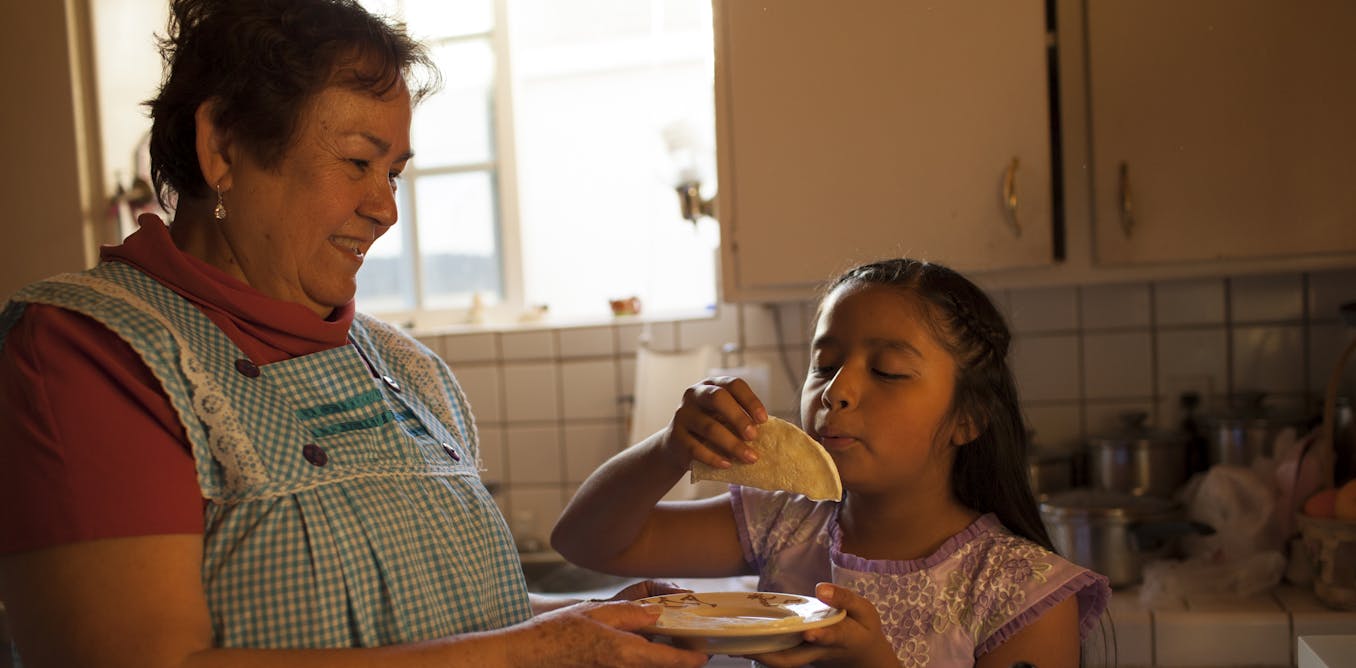The federal government has conducted the U.S. Household Food Security Survey Module for more than 25 years. The data collected annually from about 50,000 U.S. households helps form estimates of the scale of food insecurity – not having access to enough food for a healthy life – at the national and state levels.
But the way Latino parents respond to some of the questions in the annual U.S. Department of Agriculture survey used to measure food insecurity doesn’t always reflect their true experiences. We published this finding in a special October 2023 issue of the Journal of the Academy of Nutrition and Dietetics.
Our team, which included development sociologist Christian DiRado-Owens, conducted a study in California, New York and Texas, using surveys and interviews to help the USDA assess the accuracy and acceptability of these questions among Latino families.
Many of the responses to the survey questions didn’t align with more detailed descriptions of the personal situations of the people we interviewed. When asked to explain their answers, many of them found it easier to talk about how they managed or coped with food insecurity than to respond to questions about how often they worried about or were not able to feed their families as they wished.
Room for improvement
Student researchers asked 62 Latino parents and caregivers the questions from the U.S. Household Food Security Survey Module, letting them select either the English or Spanish version. For half of the 18 questions, people need to answer “often,” “sometimes” or “never.”
For example, the first statement is:
(I/We) worried whether (my/our) food would run out before (I/we) got money to buy more. Was that often true, sometimes true, or never true for (you/your household) in the last 12 months?
The rest are “yes” or “no” questions, such as:
In the last 12 months, since last (name of current month), did (you/you or other adults in your household) ever cut the size of your meals or skip meals because there wasn’t enough money for food?
After people completed the survey, interviewers prompted them with open-ended questions to elaborate further. This approach allowed participants to give feedback about the survey and share their thought processes about their responses.
We found that comprehension of the English words or the Spanish translation of these questions wasn’t the main issue. Rather, the way the questions were written could be improved.
For instance, when asked how often they skipped meals or reduced the size of meals, some of the people we interviewed answered “never.” But they went on to describe how they often prepared significantly smaller meals. In some cases, they recounted having eaten a small snack instead of a meal.
In addition, some of the people who responded that they could always afford enough food for their families later shared how they regularly relied on food pantries and similar programs designed for intermittent or emergency use. While their answers showed a commitment to feeding their families, they did not align with the intention of the questions – indicating that the survey may be underestimating true levels of food insecurity.
Overall, the sensitive nature of the questions and the limited number of possible response options made it hard for some people to answer them accurately – especially on the subject of their children not having enough food. Many people also said they felt that the phrasing of the questions about being able to afford food didn’t reflect their personal situations or experiences.
Joseph Prezioso/AFP via Getty Images
Higher levels of food insecurity
U.S. food insecurity increased from 10.2% in 2021 to 12.8% in 2022, according to official estimates.
Government agencies, nonprofits and researchers like us use the survey’s findings to address food insecurity and make decisions about food assistance and nutrition policies and programs, including the Supplemental Nutrition Assistance Program.
The Latino population is growing quickly and has become the nation’s largest racial or ethnic group. About 19% of the U.S. population, as of 2022, identified as Hispanic or Latino. Without accurate data regarding this large community, the picture of food insecurity is incomplete. And until now, there has been too little research done to assess whether the survey questions are eliciting valid data for Latinos.
Food insecurity among Latino families with children is already high, according to the most recent official data, which was collected in 2022: 13.2% compared with 5.5% for white households with children. But based on our findings, it’s likely that the real picture is even worse.
Next steps
Our team is now analyzing data from the interviews we conducted to take a closer look at the strategies these Latino families used to cope with food insecurity at the height of the COVID-19 pandemic.
We’re also seeing whether Latino parents and caregivers living in very large urban communities answered questions differently compared with those residing in smaller cities and towns.
In addition, we want to assess any differences among Latinos of different heritages – such as Mexican Americans and Puerto Ricans – to find ways to get more accurate data regarding food security for Latino families with children.

The article US food insecurity surveys aren’t getting accurate data regarding Latino families by Cassandra M. Johnson, Assistant Professor of Nutrition, Texas State University was published on 29/11/2023 by theconversation.com







































